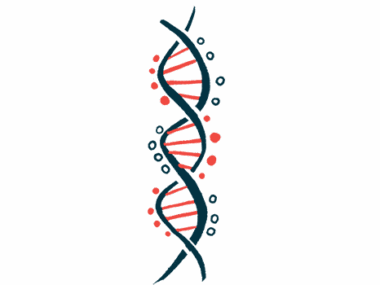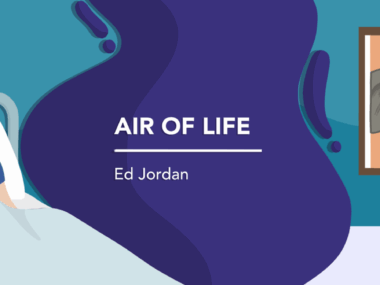This Is Not Alex’s Story, It’s Ours
Written by |

Africa Studio/Shutterstock
When I was a kid and adults learned that my younger sister, Mary, had cystic fibrosis, their standard response was a meaningful sigh coupled with a slow nod. Then, they’d often tell me, “Oh yes, I read the book.”
I knew what they were going to say before the words left their mouth: “Alex: The Life of a Child,” a book about the short life of Alexandra Deford written by her father, sportswriter Frank Deford.
I first saw the book at home in my parents’ room, but I never took it down from their bookshelf, or any other. To this day, I haven’t read it. Alex’s ghost has followed me, though, as I’ve felt her haunting my footsteps many times.
That’s one of the reasons I’m writing this column. It’s important to make nice with ghosts, to fully honor them, and to ask them not to hover in the space that’s meant for the living.
Alex’s story is a tragic one, and like the stories of all lives lost to CF, it deserves a telling. Alex was born in 1971, back in the Bad Old Days, before, among other things, the discovery of pancreatic enzyme replacement therapy.
When I think back to the Cystic Fibrosis Foundation events of my youth, that’s one of the images that stands out most starkly: CFers suffering from malnutrition who looked like they could have been citizens of a nation struggling with famine. Most CFers need digestive enzymes to absorb the nutrients in their food.
Mary was born the same year a new synthetic enzyme debuted on the market to address pancreatic malabsorption. She was also born the year after Alex died at age 9. In 1986, when my sister was 5, Alex’s story was made into a TV movie.
Though they were born a decade apart, Mary’s childhood contained many of the struggles Alex endured in her short life. My sister was also regularly hospitalized. Even with enzymes, she struggled with digestion. My mother had to make a disgusting concoction she called “Mary’s Milk,” which was whole milk spiked with additional powdered milk to stuff her with as many calories as possible. Like Alex, a life of lung infections led my sister to develop hemoptysis, the medical term for coughing up blood.
But a lot changed, too. Like Alex, my sister’s childhood included multiple daily rounds of chest percussion. My older sister and I were trained in the therapy Mary did at least twice a day — before bed and first thing each morning, even on Christmas! We enjoyed suctioning the vinyl percussor cups onto our chins like goatees.
By the 1990s, my sister had her own chest wall oscillation device, aka “The Vest.” The Vest was part of our family’s life until my sister’s double-lung transplant in 2018. As a toddler, my daughter nicknamed that noisy chest clearance device “the Aunt Mare shaky,” half-fascinated, half-frightened of it.
With the identification of individual CF gene mutations came gene therapy and new CF drugs. Thanks to all these advances, CF ceased to be a disease with only very young patients. Suddenly, there were teenage and young adult CFers, CFers starting independent lives. It was a new day.
Because I saw all of these advances up close, I felt angry and betrayed when “Alex: The Life of a Child” appeared as required reading for my college roommate’s “Death and Dying” course. My sister wasn’t busy dying. She was busy living. Why couldn’t people put the old narrative to bed, or at least update it? The people reading Alex’s story to learn about dying should know that while her story might be fixed in history, this disease and its treatment were evolving.
Over the years, I’ve watched the life expectancy for CF patients creep up from 18 to 30 to 40. My sister just turned 39. Most of the CFers I know are around her age and are all in different places health-wise. That, of course, is the other essential truth: There is not one CF story. There are as many stories as there are people with this disease. Alex Deford, Gunnar Esiason, Claire Wineland, and Laura Rothenberg are a few of the famous faces of CF, but there are so many more stories to tell.
The future of CF is open. This means both uncertainty and hope. I’ve found I can make peace with the long shadow Alex cast in my life because while I know there are challenges ahead, there will be advances, too. Alex is part of CF’s story, and so is everyone touched by this disease. Together, we live in hope, breathe, and believe.
***
Note: Cystic Fibrosis News Today is strictly a news and information website about the disease. It does not provide medical advice, diagnosis, or treatment. This content is not intended to be a substitute for professional medical advice, diagnosis, or treatment. Always seek the advice of your physician or other qualified health provider with any questions you may have regarding a medical condition. Never disregard professional medical advice or delay in seeking it because of something you have read on this website. The opinions expressed in this column are not those of Cystic Fibrosis News Today, or its parent company, Bionews, and are intended to spark discussion about issues pertaining to cystic fibrosis.








Becky Fox
I must admit I felt somewhat offended when you stated that you felt anger and betrayal when your roommate was assigned to read Alex's story. My question is why? I read the condensed version when my daughter was four or five years old, then the entire book when she got a little older. The title states "The Life of a Child", not "The Death of a Child". Alex's life was just as dear to her family as your sister's and my daughter's is to their families. The unfortunate fact about Alex's life is she was born in an Era prior to : 1. the discovery of the CF gene; 2. Many of the medications that make CF more manageable; and 3. the breakthrough development of Trikafta.
Knowing what we know now about CF, and moving forward on that information should, in no way, cause us to dismiss the effects of Cystic Fibrosis on past victims of the disease. Just realizing that most children born with CF in this Era of enhanced medications and therapies have a survival rate that enables them to grow up and live as near "normal" a life as any other child without medical or physical disabilities, should give hope and encouragement to parents worldwide. Therefore, the need to know CF's devastating toll on the bodies of its past victims, gives us reason to appreciate how much science and research has advanced in the last 50 years.
I'm sure you are well aware of all I have mentioned here, I just felt the need to emphasize the importance of history as it pertains to CF.
In Frank Deford's book I found Alex to be an exceptional little girl, who met her condition realistically, with courage and bravery beyond her years. "Alex, The Life of a Child" is a book that should be read by every parent and family member of a child or adult affected by Cystic Fibrosis.
I am so happy that your sister is a survivor. My daughter also has survived 41 years of life with CF.
Lori White
I remember that book all too well. I was born in 1972, before most of the treatments and a powdered medicine mixed in with my applesauce before the capsules came. I remember reading that book to find out what I was dealing with and it made me sick. I haven’t seen that book since the early 80’s but to this day whenever I see 2 liter bottles of Soda I think of her. If I am remembering correctly, that was what she asked for before she died. I never watched the movie. It’s nice to see CF had made some great strides with treatments.